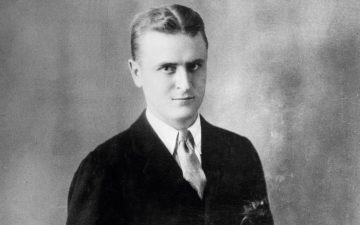Leo Robson in New Statesman:
 Maybe my book is rotten,” F Scott Fitzgerald told a friend, in February 1925, shortly before the publication of The Great Gatsby, “but I don’t think so”. If the first half of his sentence was perfunctory, the second half was the wildest kind of understatement. By that point, Fitzgerald knew what he had achieved. Six months earlier, he informed Maxwell Perkins, his editor at Scribner’s, that his work in progress “is about the best American novel ever written”. And Perkins’s reaction had done little to shake his sense of confidence. He called the book “a wonder”, adding: “As for sheer writing, it’s astonishing.”
Maybe my book is rotten,” F Scott Fitzgerald told a friend, in February 1925, shortly before the publication of The Great Gatsby, “but I don’t think so”. If the first half of his sentence was perfunctory, the second half was the wildest kind of understatement. By that point, Fitzgerald knew what he had achieved. Six months earlier, he informed Maxwell Perkins, his editor at Scribner’s, that his work in progress “is about the best American novel ever written”. And Perkins’s reaction had done little to shake his sense of confidence. He called the book “a wonder”, adding: “As for sheer writing, it’s astonishing.”
Fitzgerald’s manuscript went through a number of iterations on its way to becoming the nine-chapter, 48,000-word novel that still sells boisterously every year. It began as something on a Catholic theme, set in 1885. Along the way, material on Jay Gatsby’s humble Midwest origins was repurposed for the story “Absolution”. And even after Fitzgerald hit on the novel’s eventual form, he toyed with a number of titles, including “Trimalchio in West Egg”, “On the Road to West Egg”, “The High-Bouncing Lover”, “Gold-Hatted Gatsby” and “Under the Red, White and Blue”. Fitzgerald, aware of his own capriciousness, unworldliness and intellectual limitations, recognised that he would never write an “objective magnum opus”, and welcomed the new emphasis on “form” and “art” in the novel. Derived from Gustave Flaubert and Henry James, though represented for Fitzgerald by Joseph Conrad and Willa Cather, theories about method emboldened his desire to compose something – as he put it to Perkins – “extraordinary and beautiful and simple and intricately patterned”.
The power of The Great Gatsby derives in some degree from the resulting conceptual neatness. Fitzgerald hit upon something that virtually all novelists dream of finding: a structure that allowed him to be dramatic and allegorical, to write about society and psychology, collective forces and individual fates, without stinting either, and to compose a portrait of the age that is also a tragedy with archetypal themes. But Perkins’s emphasis seems the right one. The novel is primarily a linguistic achievement – an exercise in evocation, pitted with local glories. Perkins pointed to the wealth of phrases “which make a scene blaze with life”. If The Great Gatsby isn’t the best American novel ever written, it may be the best-written American novel.
More here.
